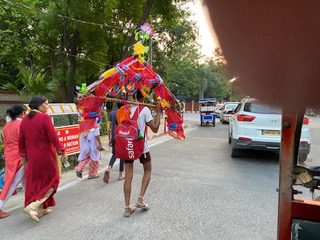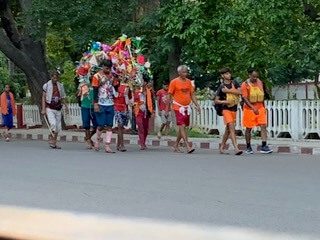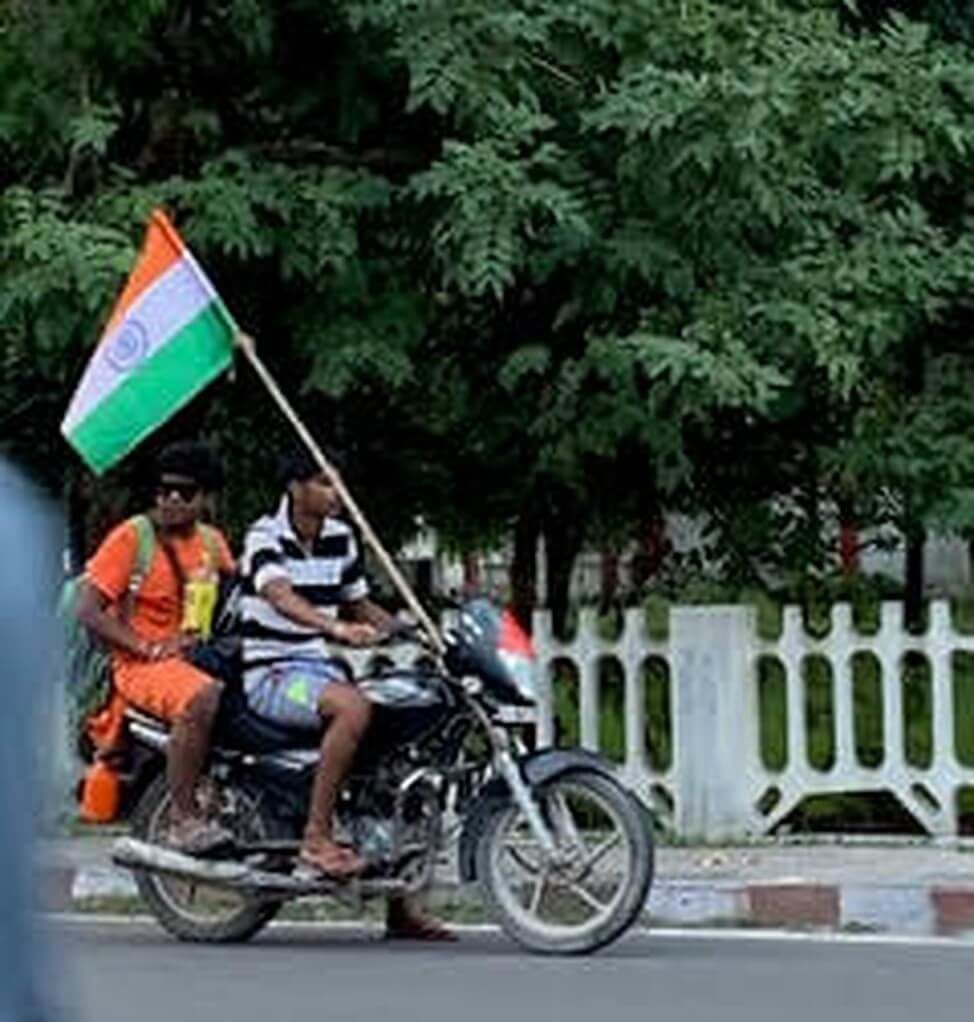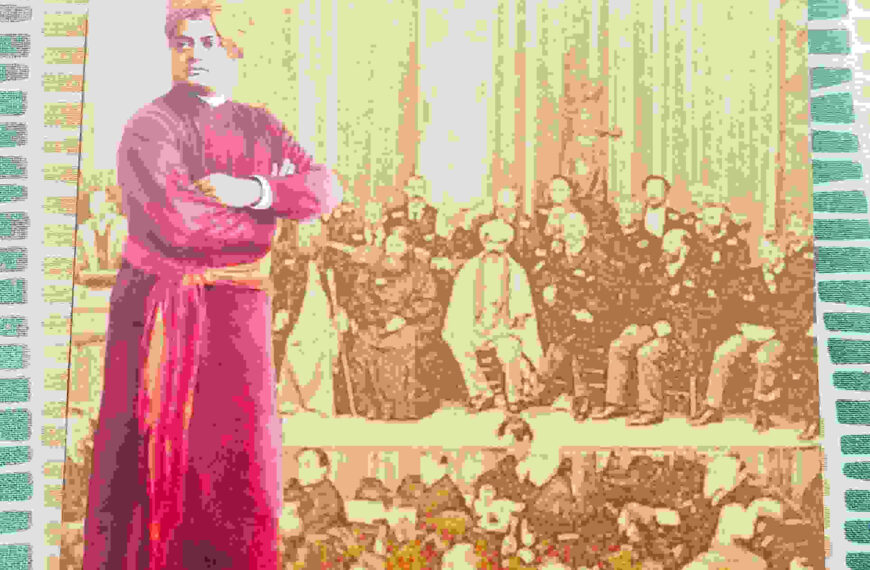Dr Roopali tells us about Kanwar Yatra in Savana when Shaivites offer Ganga water to Shiva. She traces its rites, rituals, and mythology – exclusively for Different Truths.

Pilgrimages are still essential journeys undertaken in India. Our myths and beliefs have translated into arduous rituals in a land of intense spirituality.
One such annual ritual is the Kanwar Yatra, undertaken to collect holy water from the river Ganga.
The month of Savana (mid-July to mid-August) is when the pelting monsoon rains arrive in the northern part of India.
During this time, a unique Yatra journey is undertaken barefoot by Hindu devotees to the river Ganga and its tributaries.
During this time, a unique Yatra journey is undertaken barefoot by Hindu devotees to the river Ganga and its tributaries. The pilgrims dressed in orange robes are called Kanwaria.
During this time, you can see thousands of Kanwaria carrying covered water pots across their shoulders. All traffic must give way.
The Kanwar Yatra is named after the Kanwar, a single pole (usually made of bamboo) with two more or less equal loads dangling from opposite ends. The Kanwar is carried by balancing the middle of the stick on one or both shoulders.
This practice of carrying Kanwar as part of a religious pilgrimage, especially by devotees of Lord Shiva, is widely followed throughout northern India.
While most pilgrims are men, a few women also participate. Most travel the distance on foot; a few travel on bicycles, motorcycles, scooters, mini trucks, or jeeps.
Bare feet, a Kanwar carries colourful decorated pagoda-like structures made of paper on the shoulder.
The journey is a kind of penance. Bare feet, a Kanwar carries colourful decorated pagoda-like structures made of paper on the shoulder. These look like the tazias carried by Muslims during Muharram. Interesting to note is that Muslim artisans also make these.
As told in Hindu Purana texts, Kanwar yatra celebrates the churning of the ocean of milk. Known as the Samudra Manthan, the ocean churning explains the origins of eternal life, Amrita. Legend says a poison pot revealed itself before Amrita. Lord Shiva chose to ingest it.
One may not personally undertake the pilgrimage, yet one can participate by being an authentic witness. As the pilgrim kānvar pass through towns and villages, groups of people, community workers, nonprofit groups and others organise rest places, food and water, medical aid and prayerful music.


People also offer active encouragement by accompanying the Kanwaria for a short distance. The local administration is alert to any untoward incidents. Traffic control police are everywhere, and road diversions are created to avoid accidents.
The COVID-19 pandemic had stopped the practice for more than two years. This year in 2022, from July 14 to 27, nearly four crore – forty million devotees walked hundreds of miles to fulfil their vows. Bleeding feet wrapped in bandages, shoulders bent under the weight of the Kanwar rose petals showered on them, microphones blaring bhajan hymns and drumbeats. Shouts of Shiva invocations, “Bum Bum Bhole”, rent the air.
Over the years, the yatra has transformed itself into a significant jamboree.
Over the years, the yatra has transformed itself into a significant jamboree. Many women have joined the long walk. Several athletic young men have taken to trekking these routes. Quite a few on motorbikes carrying the National tricolour flag in a triumphant show of patriotism and Hindu pride. The insidious political intrusion is apparent — a sign of the times.
Meerut is one of the major cities on the Kanwar Yatra. The Augurnath Temple in Meerut is an important destination. The holy water is poured on Lord Shiva. Thousands descend on the city to perform this ritual.
It has been an annual ritual for me to ride in a battery-operated rickshaw driven by an enthusiastic Sayyed Imran Ali to see the Kanwariya pass through Meerut on their way to the river Ganga.
Magically my heart and mind are filled with excitement and anticipation. A palpable air of determination and strength pervades the whole atmosphere. It is overwhelming.
On their return journey, I share their deep exhaustion.
On their return journey, I share their deep exhaustion. I find them sitting it out or stretched out in the green lawns and parks bordering pavements. Others are heading home. Some are enjoying the fairs set up for entertainment. Locals are in a celebratory mood.
There is a quiet sense of accomplishment and satisfaction. It is truly inspiring.
This witnessing of a cultural connection with antiquity and the days of divinity. All too soon, it is over. The drumbeats are silent.


Pouring water to stoke the poison fumes is a collective acknowledgement of the sacrifice made by Lord Shiva, who ingested poison …
Pouring water to stoke the poison fumes is a collective acknowledgement of the sacrifice made by Lord Shiva, who ingested poison to save Earth and its Gods, Demons and Humankind. The poison stained his throat a deep, dark hue, giving him the name Neelkanth. He with a blue throat. It is also a participative act of being part of the continuity of culture and our connectivity with the source of life – water!
I, too, made the journey.
The Kanwar Yatra is, after all, a spiritual quest.
Photos by the author






 By
By

 By
By
 By
By
An enriching and enlightening read